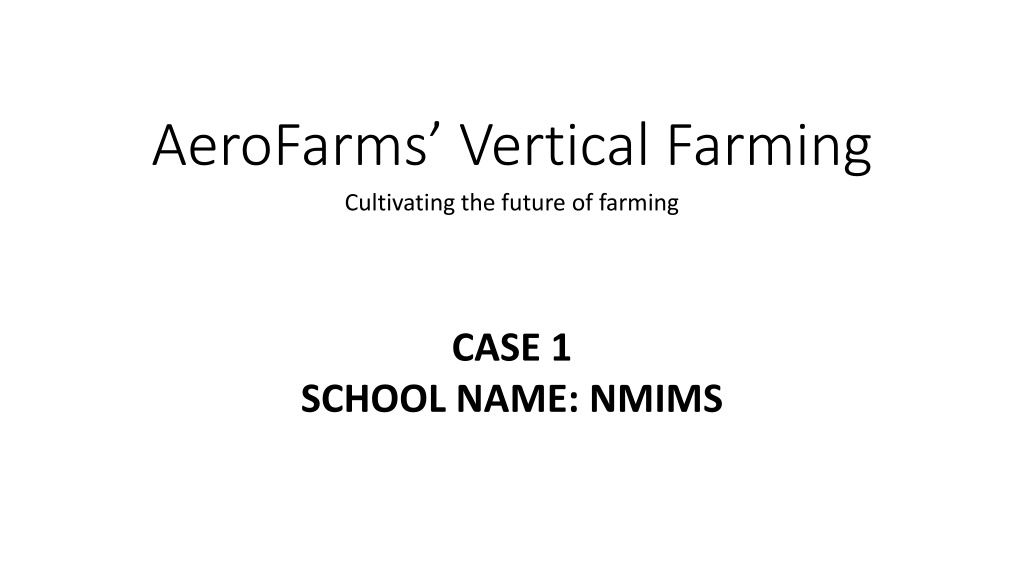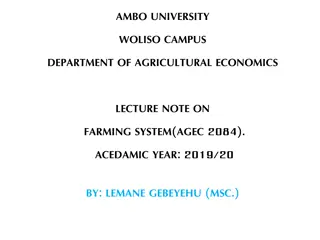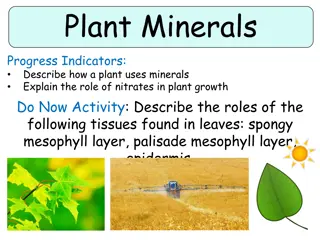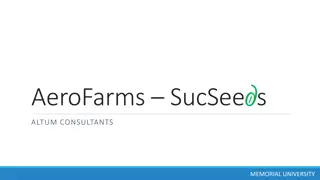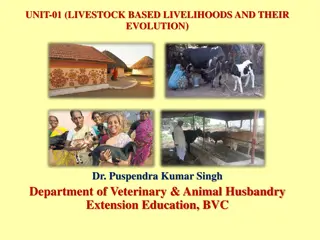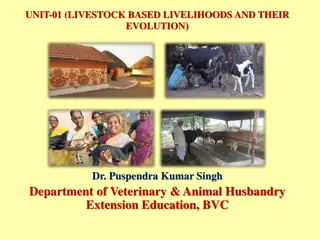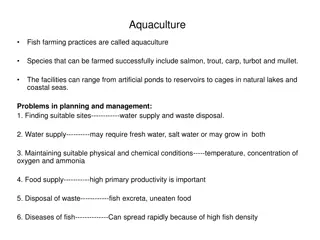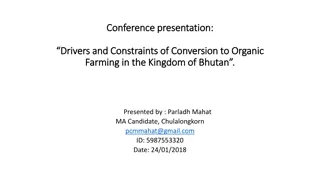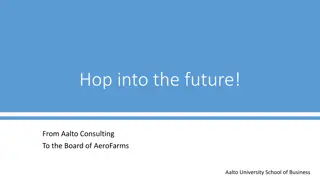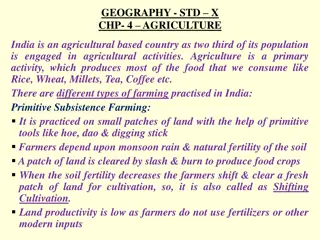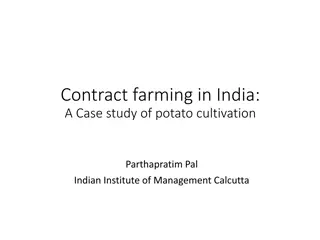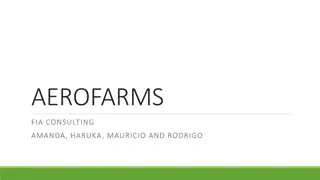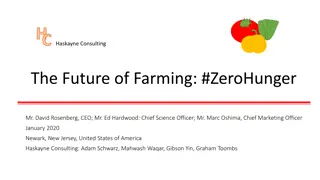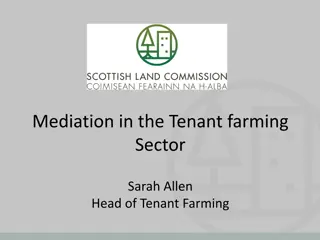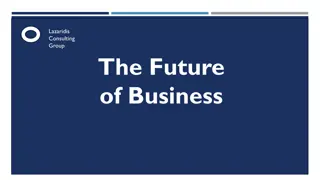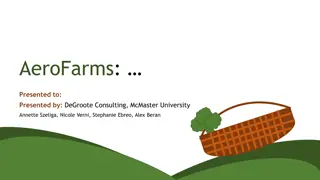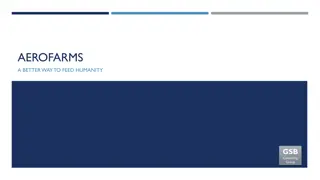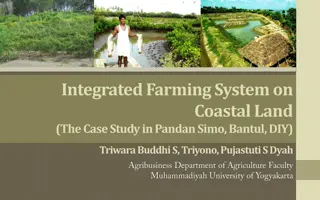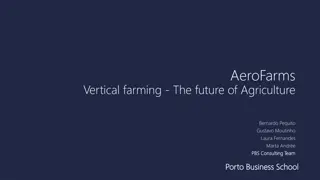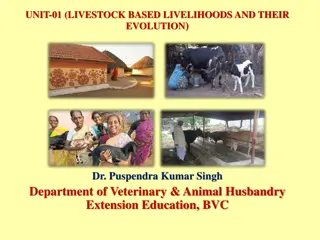AeroFarms: Cultivating the Future of Farming
AeroFarms is looking to expand internationally while promoting environment-sensitive farming methods. Challenges include capital expenditure, energy efficiency, and food sustainability. Analyzing legal, political, economic, social, technological, and environmental factors is crucial. The company's strengths lie in climate-resilient farming, data analytics, and cost efficiency. Opportunities include geographical expansion and partnerships, while threats include trade wars and policy issues.
Download Presentation

Please find below an Image/Link to download the presentation.
The content on the website is provided AS IS for your information and personal use only. It may not be sold, licensed, or shared on other websites without obtaining consent from the author. Download presentation by click this link. If you encounter any issues during the download, it is possible that the publisher has removed the file from their server.
E N D
Presentation Transcript
AeroFarms Vertical Farming Cultivating the future of farming CASE 1 SCHOOL NAME: NMIMS
Problem Statement To swiftly and realistically expand AeroFarm internationally while also promoting awareness for an environment-sensitive way to feed humanity more efficiently
Analysis of the Case Worldwide market value of Vertical Farming Challenges faced by AeroFarming Analyzing the Environment of Futuristic Farming Overview of AeroFarming
Market value of vertical farming Vertical Farming Market Value Region-wise (2015) Europe 11% 21% North America 35% Asia Pacific 33% Rest of the world
Challenges faced Attaining profitability and a sustainable business model Addressing high Capital Expenditure Finding efficient energy alternatives Addressing the lack of high-calorie based proteins and grains Financial and geographical expansion
Analyzing the Environment of Futuristic Farming Legal Political Economical Social Technological Environmental Subsidy laws USD-certified approvals FII policies Trade Wars Capital Expenditure Energy consumption Food Security Fresh vegetables Data Analytics Capabilities Continuous monitoring and improvement Climate Change ??2 emissions
Overview of AeroFarming STRENGTHS WEAKNESSES Not affected by climate change Elimination of a middle-man Fresh and easily available vegetables Use of data analytics Cost effectiveness Uniform quality and consistency High level of CapEx Lack of high-calorie food items High energy consumption OPPORTUNITY THREATS Geographical expansion Tie-ups with local farmers Building a sustainable business model Existence of hydroponics and aquaponics Subsidy Laws Trade Wars FII policies
Alternatives Franchising Model Joint Venture Model Await further Government benefits Land (FII and FDI) Revenue Sharing Acquisition & Leasing
1. Await further Government benefits To await additional sources of funding locally within the USA To await ease of trade tensions Lobbying to attain USDA organic certification
2. Franchising Model Land Acquisition & Leasing Revenue Sharing Revenue Sharing model Purchasing aero farm land & equipment and leasing it to the franchise owner with an exclusivity clause Charging a yearly royalty (2%) for the use of AeroFarm brand name Charging a yearly royalty (2%) for the use of AeroFarm brand name
3. Joint Venture Model(FII and FDI) Ownership 51:49 JV with a local investor preferably from a real estate/agricultural background Reducing high capital/debt liabilities for AeroFarms 49% 51% Prevents the brand image from appearing to cannibalize local farmers Local expertise Access to local markets AeroFarm Local Investor
3. Joint Venture Model(FII and FDI) Eg: India availing Government offered benefits such as Make In India (Investment and Tax benefits) Skill India (Training rural youth farmers) India is on the track of 100% electrification by 2022 Heavy agricultural background Second largest food consumer-base in the world
Alternatives Franchising Model Await further Government benefits Joint Venture Model Land (FII and FDI) Royalty- based Acquisition & Leasing
Evaluation of Alternatives Await further Government benefits Franchising Model Joint Venture Model (FII and FDI) Capital Intensity Government Regulations Expansion Capabilities Operational Control
Recommendation Global expansion to countries open to investment and technology transfer in order to avail investment and new markets that are: Directly facing the brunt of climate change Shortage of land Nutritional deficiency High crop destruction rates
Business Statement An environment sensitive way to feed humanity more efficiently
USP Low Cost Aerofarming practices (Cloth Patent) First Movers Advantage Objectives Advertise cleaner fresher and sustainable eating habits Advertise local inclusion for farmers Modern green revolution
Target Audience Young Adults 18-38 years old living alone Home owners Restaurants Select Channels TG1: Social Media and Expositions TG2: Google PPC, Direct Marketing and Advertising TG3: Dream Green Outlet
Hiring and Training Tying up with local agricultural, biotechnology, engineering universities to introduce AeroFarm branded courses Hiring local youth farmers and training them with partner universities Tying up with high-end tech universities in order to hire highly skilled professionals in the fields of data science, quality management and operations Hiring local taste experts to fine-tune crops to local palletes
Total Quality Management ISO 14001 To finalise norms and operational standards in order to achieve environmental objectives which contribute to sustainable development To ensure tight quality control in overseas operations
Revenue per dollar of funding 2.448 Gotham Greens Farms LLC 0.210 AeroFarms LLC 0.101 BrightFarms Inc. 0.043 Bowery Farming Inc. 0.022 Plenty Farming Inc. 0.000 0.500 1.000 1.500 2.000 2.500 3.000
Assumptions Sales based on past production of Newark Plant Labour Cost considering 15 labours requirement per plant with an average cost of $40,000 Other include: Mineral Cost, Training & Recuritment cost of employees
Expected Operating Profit per acre of farm Expected figures per acre of land Million US$ Revenue 3 Less electricity 0.4 Less Others 1 Less Labor cost 0.08 Less SG&A 0.05 Less Lease 0.1 Operating Profit 1.37
Future Plan Gradually adopt to a real estate franchising model Continuously evolve R&D to look for better methods to develop protein-rich offerings Look for alternative sources of sustainable energy
Risk Mitigation Risk Mitigation Likelihood Impact Need for protein rich offerings Promoting as a leafy green veggie brand M H Government Regulations Lobbying, Moving to more friendly regulatory regimes M H Power Fluctuations Backup generators, targeting areas less probable to power cuts L M
